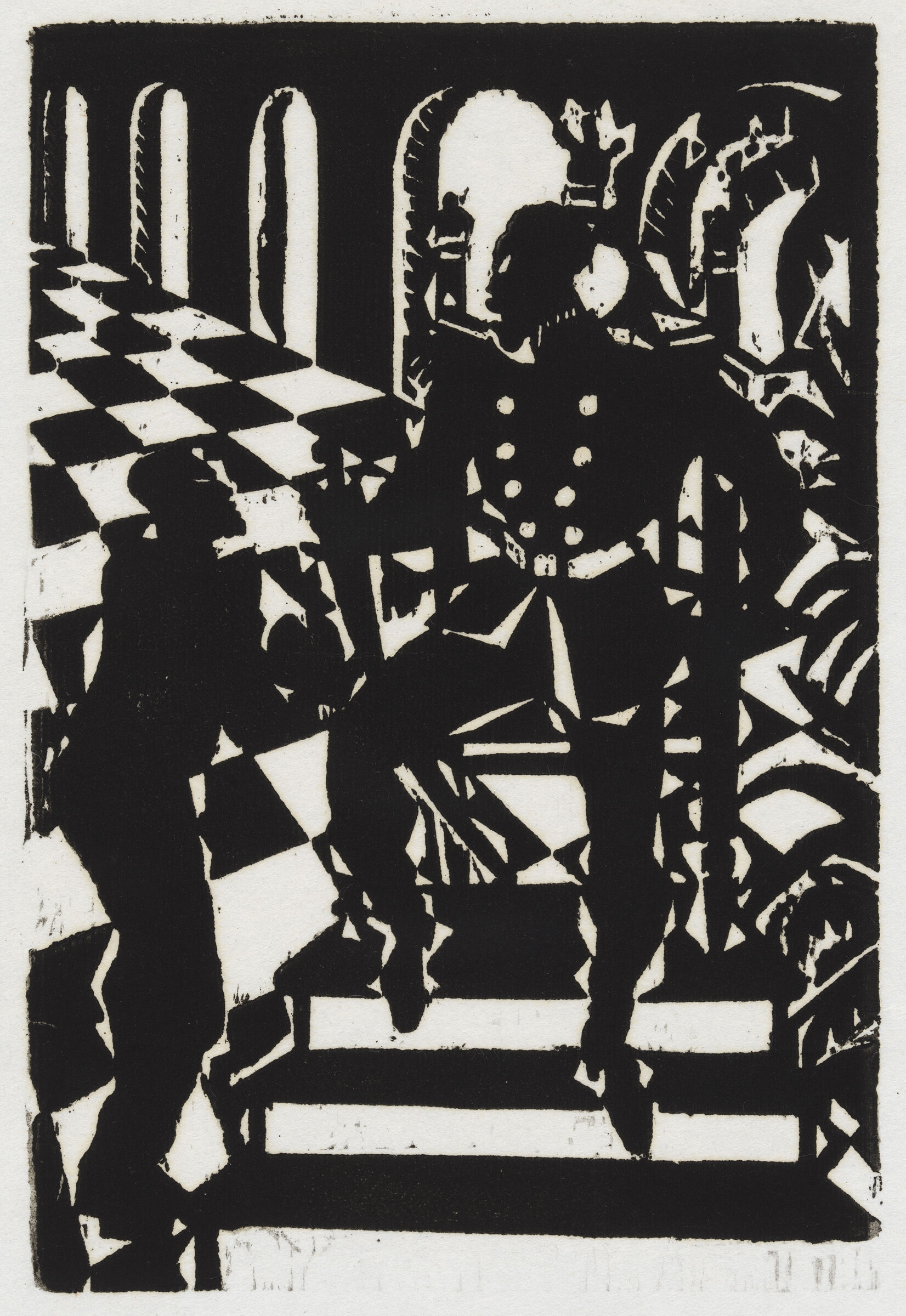At the Dawn of a New Age: Early Twentieth-Century American Modernism | Art & Artists
May 7, 2022–Feb 26, 2023
At the Dawn of a New Age: Early Twentieth-Century American Modernism | Art & Artists
Aaron Douglas
9
Born 1899 in Topeka, KS
Died 1979 in Nashville, TN
Aaron Douglas moved to Harlem from the Midwest in 1925 and quickly became the most sought-after graphic artist of the Harlem Renaissance, designing covers for the two leading African American magazines and jackets for books by Black writers. The three woodcuts on view were based on gouaches he made to illustrate scenes from Eugene O’Neill’s The Emperor Jones, which had premiered in 1920 and was revived in 1925 with Douglas’s friend Paul Robeson—now well known for his acting, singing, and civil rights work, but then a newcomer—in that title role. The prints typify Douglas’s signature style: flat, abstracted silhouettes in black and white fashioned after Art Deco, folk art cutouts, and Egyptian tomb paintings. Simplified versions of these images accompanied Alain Locke’s 1926 article “The Negro and the American Stage” in Theater Arts Monthly as well as his 1927 book Plays of Negro Life.
Bravado, from Emperor Jones, 1926
Artists
- Richmond Barthé
- Ben Benn
- Albert Bloch
- Oscar Bluemner
- Patrick Henry Bruce
- Charles Burchfield
- Arthur B. Carles
- John Covert
- E.E. Cummings
- Imogen Cunningham
- James Daugherty
- Arthur B. Davies
- Stuart Davis
- Manierre Dawson
- Charles Demuth
- Isami Doi
- Aaron Douglas
- Arthur Dove
- Charles Duncan
- Yun Gee
- Marsden Hartley
- Rebecca Salsbury James
- Loïs Mailou Jones
- Taizo Kato
- Gaston Lachaise
- Blanche Lazzell
- Stanton Macdonald-Wright
- Man Ray
- John Marin
- Elie Nadelman
- Louise Nevelson
- Carl Newman
- Isamu Noguchi
- Chiura Obata
- Georgia O'Keeffe
- Walter Pach
- Agnes Pelton
- Nancy Elizabeth Prophet
- Henry Lyman Sayen
- Charles G. Shaw
- Harry Shigeta
- Henrietta Shore
- Pamela Colman Smith
- Joseph Stella
- Florine Stettheimer
- John Storrs
- Henry Fitch Taylor
- Helen Torr
- Jay Van Everen
- Adele Watson
- Max Weber
- Edith Clifford Williams
- Marguerite Zorach
- William Zorach

